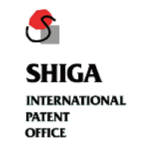1. Introduction
Effective from April 1 2022, the Japan Patent Office (JPO) has implemented regulations on restrictions of multi-multi claims on patent applications and utility model registration applications. The goal is to enhance global harmonisation and reduce tasks pertaining to examinations and the burden of monitoring by third parties.
Japanese applicants must take prompt measures towards following the new regulations to avoid unnecessary costs and to obtain a patent in an effective manner when they file a first application to the JPO. Overseas applicants should also be aware of the regulations and take swift measures when they enter the Japanese national phase with their priority claim based on the Paris Convention for the Protection of Industrial Property (the ‘Paris Convention’).
The JPO defines the term multi-multi claim as “any dependent claim that refers to more than one other claim in the alternative which depends [on] any other multiple dependent claim”.
This article introduces an overview of multi-multi claim restrictions and gives insights and advice from a Japanese’s patent attorney’s point of view.
2. Aims of multi-multi claim restrictions
1) Global harmonisation
Although there have been calls for promoting patent obtainment worldwide, whether multi-multi claims are allowable varies from country to country. Therefore, applicants have needed to modify the scope of the claims of their application to comply with each country’s system.
Prior to the implementation of multi-multi claim restrictions in Japan, multi-multi claims were allowable only at the JPO and the European Patent Office (EPO) among five major intellectual property (IP) offices, while not allowable at the United States Patent and Trademark Office (USPTO), the China National Intellectual Property Administration (CNIPA), and the Korean Intellectual Property Office (KIPO). That caused a burden on applicants.
| USPTO | KIPO | CNIPA | EPO | JPO |
Multi | 〇 | ○ | ○ | ○ | 〇 |
Multi-multi | × | × | × | ○ | 〇→× |
2) Burden of examination and monitoring by third parties
Multi-multi claims created a burden with regard to examinations and monitoring by third parties as they have to grasp all the recitations of each claim cited by the multi-multi claim in combination when they consider one claim.
The surge in the number of patent applications filed worldwide has increased the necessity of reviewing the literature and languages pertaining to a patent application in judging novelty and an inventive step of claimed inventions. These indirect factors are believed to have contributed to the introduction of multi-multi claim restrictions in Japan.
3. Examination of multi-multi claims
1) Patent applications subject to multi-multi claims
The restrictions of multi-multi claims have been applied to patent applications and utility model registration applications with filing dates after April 1 2022. The filing date indicates the date when an application with a priority claim based on the Paris Convention is filed at the JPO. For an international application, the filing date is the international filing date when a Patent Cooperation Treaty (PCT) application enters the national phase in Japan.
A divisional application can be protected retroactively from the filing date of its parent application. If the parent application is not subject to the multi-multi claim restrictions, the divisional application is also not subject to them. The restrictions are also not applied if a patent application is converted from a utility model registration application or a design application with a filing date before March 31 2022.
2) Substantive patent examination
Multi-multi claims are restricted by Rule Article 24ter(v) of the Ordinance for Enforcement of the Patent Act, which is authorised by Article 36(6)(iv) of the Japanese Patent Law. If a patent application violates Rule 24ter(v), the JPO issues a reason for rejection for violation of Article 36(6)(iv) (the ‘Ministerial Ordinance requirement’). However, violation of the restrictions of multi-multi claims can be neither a reason for opposition nor a reason for invalidation.
Any claim cited by any dependent claim that refers to more than one other claim in the alternative (a ‘multiple dependent claim’) must not be a dependent claim that refers to more than one other claim in the alternative. In the following two examples, the claim marked with a star is deemed to be in violation of the Ministerial Ordinance requirement.
Example 1
[Claim 1] An apparatus comprising A.
[Claim 2] The apparatus according to Claim 1, further comprising B.
[Claim 3] The apparatus according to Claim 1 or 2, further comprising C. Multi claim
[Claim 4] The apparatus according to any one of Claims 1 to 3, further comprising D. Multi-multi claim ★
[Claim 5] Apparatus according to Claim 4, wherein D is d1.
[Claim 6] Apparatus according to Claim 4, wherein D is d2.
[Claim 7] Apparatus according to Claim 5 or 6, further comprising E. Multi-multi claim ★
Since Claim 4 is a multi (multi-multi) claim depending on Claim 3, which is a multi claim, Claim 4 violates the Ministerial Ordinance requirement. In addition, since Claim 7 indirectly depends on Claim 4, which is a multi (multi-multi) claim, Claim 7 violates the Ministerial Ordinance requirement. Claims 4 and 7, which violate the Ministerial Ordinance requirement, are not subject to patent examination for requirements other than the Ministerial Ordinance requirement related to multi-multi claims.
In addition, as Claims 5 and 6 depend only on Claim 4, those claims do not violate the Ministerial Ordinance requirement. Having said that, since Claims 5 and 6 depend on Claim 4, which is a multi-multi claim, those claims are not subject to patent examination for requirements other than the Ministerial Ordinance requirement related to multi-multi claims. As a result, patentability requirements such as novelty and inventive step of Claims 4 to 7 will not be examined at this time.
Example 2
[Claim 1] An apparatus comprising A.
[Claim 2] The apparatus according to Claim 1, further comprising B.
[Claim 3] The apparatus according to Claim 1 or 2, further comprising C. Multi claim
[Claim 4] A program causing the computer to function as the device according to any one of Claims 1 to 3. Multi-multi claim ★
In Example 2, Claim 4 is a multi (multi-multi) claim that depends on Claim 3, which is a multi claim, and Claim 4 violates the Ministerial Ordinance requirement. Therefore, patentability requirements such as novelty and inventive step on Claim 4 will not be examined at this time.
For Example 1 and Example 2, the JPO issues a reason for rejection stating that Claims 4 to 7 violate the Ministerial Ordinance requirement along with the examination results of Claims 1 to 3. The reason for rejection can be overcome by making amendments of the scope of the claims so that they do not include a multi-multi claim.
When the requirements other than the Ministerial Ordinance requirement need to be examined after the reason for rejection regarding multi-multi claims has been overcome by amendments, another notice of reasons for rejection for the other requirements would be deemed as a final office action (OA) since that reason for rejection is made necessary by the amendments.
3) Examination of the basic requirements for a utility model registration application
In Japan, unlike patent examination, a utility model registration application is registered without substantive examination. However, even in the case of utility model registration applications, a multi-multi claim is restricted by Rule 4(v) of the Ordinance for Enforcement of the Utility Model Act, which is authorised by Article 5(6)(iv) of the Japanese Utility Model Law.
When a utility model registration application violates Rule 4(v), the scope of its claims is subject to invitation to amendments as it is deemed not to satisfy the basic requirements stipulated by Article 6bis of the Japanese Utility Model Law. An applicant to whom the invitation to amendment is issued can overcome this violation of the basic requirements by making amendments to the scope of its claims so as not to include a multi-multi claim.
4.Practical tips
Since there are no restrictions on the number of claims or the number of independent claims in Japan, one solution could be for an applicant to increase the number of claims to identify a group of claims specified by a multi-multi claim without using a multi-multi claim. On the flip side, it increases the filing-related fees, considering that the amount of the fees for filing a request for substantive examination and registration depends on the number of claims.
It is important for an applicant to carefully select an invention to be patented in light of their patent strategy, etc., and to fix the appropriate scope of the claims when filing the application.
Furthermore, there have been some cases where the concept of the invention for an existing claim set with multi-multi claims is listed in the last part of the specification. Such a countermeasure could be effective in view of possible amendments in responding to a reason for rejection. In addition, this countermeasure could also be effective for the applicant to enjoy the effects of the claim of priority when the application is to be filed in an IP office that allows a multi-multi claim claiming priority based on a Japanese application.
More importantly, where a Japanese application is filed based on an application filed at another IP office that allows multi-multi claims or a PCT application with a multi-multi claim enters the national phase in Japan, it has been taken for granted that the claims of the basic application or the PCT application per se are unlikely to comply with the Japanese practice. It would be advisable for the scope of the claims to be reviewed when filing at the JPO, entering into the national phase in Japan, or filing a request for patent examination.
A detection tool for multi-multi claims can be downloaded on the JPO website. The tool is conducted offline.
5. Conclusion
JPO statistics show that the ratio of applications with multi-multi claims to the total number of patent applications was approximately 65% before the implementation of the restriction of multi-multi claims. After introduction of the restrictions, the ratio dropped to about 5% (6.0% filed in April 2022 and 4.5% filed in May 2022).
It is assumed that no reasons for rejection against the multi-multi claim restriction have been issued by the JPO on the premise that the average duration from filing to the first OA is 10 months. With regard to utility model registration applications, the JPO has already issued invitations to amendments to applicants due to violation of the basic requirement.
Most Japanese companies have taken swift and necessary measures to comply with multi-multi claim restrictions before the implementation, while overseas companies have not yet done so.
Overseas applicants may have time to consider the measures as most of their applications fall under a patent application with a priority claim based on the Paris Convention or a PCT national phase entry. However, it is wise to urge overseas companies to gather accurate information and consider taking the necessary steps as soon as possible before their applications become subject to examination of multi-multi claim restrictions.












